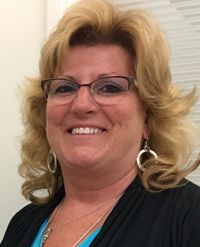Starting at "Zero" - Achieving Hospice and Palliative Care Certification
Leaders from Yale Smilow saw an opportunity to create an educational program to facilitate certification of inpatient and outpatient nurses in hospice and palliative care.
Vanna M. Dest, MSN, APRN, BC, AOCN

Dawn Blake-Holmes, MSN, APRN, CCNS
Vanna M. Dest, MSN, APRN, BC, AOCN

Mandeep Smith, BSN, RN
Smilow Cancer Hospital at Yale New Haven Hospital (SCH) is the clinical facility of the Yale Cancer Center, a National Cancer Institute-designated cancer center and member of the National Comprehensive Cancer Network. SCH treats more patients than any other hospital in Connecticut and serves as a statewide referral base with 10 ambulatory care centers and oncology service lines at three other hospitals and is rapidly expanding its scope of coverage.
At SCH, nurses caring for patients at the end of life were not certified in the specialty of Hospice and Palliative Care. It is well documented in the literature that certified nurses in their specialty have higher degrees of competency and advanced knowledge which contributes to superior patient outcomes.
In 2015, 53% of the 450 SCH RNs held a national certification, however, none as Certified Hospice and Palliative Care Nurse (CHPN). Providing educational support to nurses preparing for certification exams can be a daunting challenge because of the diverse locations statewide of our nurses. Thus, leaders saw an opportunity to create an educational program to facilitate certification of inpatient and outpatient nurses in this specialty.
The goal was to develop and implement a CHPN certification review course to prepare nurses for CHPN Examination. In collaboration with the service line Educator and the clinical nurse specialist, we developed a virtual CHPN review course. The course consisted of eight, 1-hour, review sessions offered weekly based on the CHPN certification exam blueprint.
The course employed a combination of learning strategies, including didactic content, case studies, question and answer, and polling for participant feedback to the instructor in real time. We vetted curriculum evaluation through our service line educators and palliative care APRNs and recruited content experts to support the 1-hour weekly education sessions.
During our pilot, two programs were offered using the hybrid approach to education with the traditional classroom setting and web-based classroom design for those participating remotely using an online learning platform. Continuing education credits were provided for each session attended. Following each session, an evaluation was electronically forwarded to participants for feedback and comments.
After completing two 8-week sessions of the program, CHPN certification for nurses employed at SCH went from 0% to 50% of the participants (30 participants; 15 sat for and passed the CHPN certification exam). The addition of these certifications improved the overall Smilow RN certification rate to 67%.
Providing a variety of platforms for the CHPN certification review course, staff members across the region were able to participate, despite the barrier of geographic location. Technology has enabled us to improve our certification rates, mostly in the ambulatory settings, a group often isolated from programs due to scheduling and geographic barriers.
In the next phase of the program, we have opened up the review program to all nurses working within the Yale Health System. Our next steps include:
- Determine why some nurses did not go on to take the certification exam
- Evaluate end-of-life patient outcomes to determine the impact of CHPN certification
- Conduct pre- and post-course surveys to evaluate nurses’ perceptions of certification
With this programmed approach to CHPN certification, we were able to meet the needs of all nursing staff across the inpatient and outpatient settings, despite the barrier of location.





